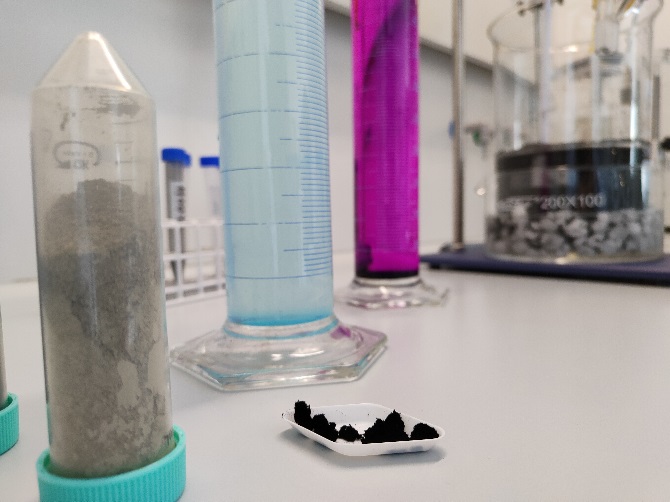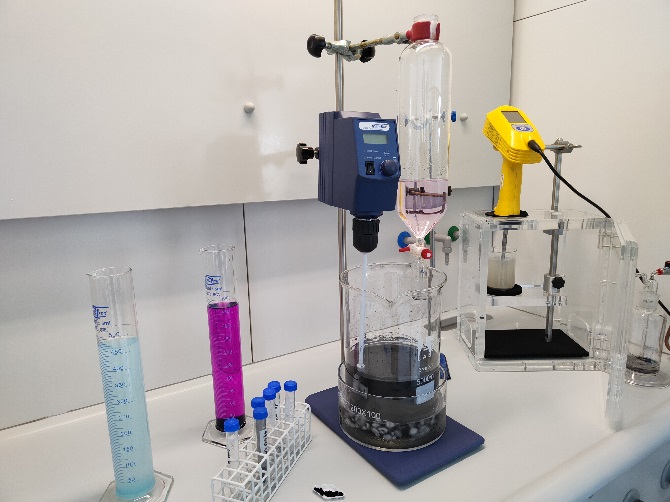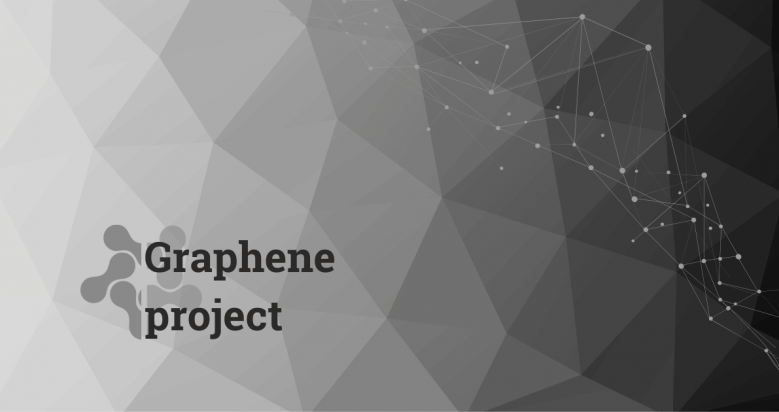Graphene – building block of the future
A material 300 times stronger than steel that will play a key role in human development in the near future. Graphene. We are already working with it in our laboratory.
Graphene project
Graphene has the potential to find applications in a wide range of sectors, but the cost of its production and the difficulty of obtaining it are currently significant barriers to the development of this material. In our laboratory, we have the technology to obtain graphene derivatives, namely graphene oxide (GO) and reduced graphene oxide (rGO), which have similar properties to graphene, as well as the possibility of production scale-up.

Our focus on graphene oxide allows us to use it to enrich other materials such as concrete, building glass, anti-corrosive and flame-retardant paints, polymers or lubricants and oils. We are working to optimise the production process of graphene oxide so that we can produce it in industrial quantities.
The construction industry is growing rapidly, but unfortunately construction costs are increasing year on year. The use of graphene oxide or reduced graphene oxide as an admixture to building materials such as concrete or glass makes it possible to reduce these costs while increasing the properties of the said materials.
What can we achieve with a graphene oxide-based additive?
- Reducing the production costs of building materials.
- Reducing the carbon footprint by using graphene oxide-based additives in the construction sector.
- Reducing the weight of building materials.
- Increasing the individual performance of building materials.
Key features
We are developing technology for the production of graphene oxide and reduced graphene oxide and are working to improve the production process on an industrial scale to produce graphene oxide for the construction industry and beyond. We produce graphene oxide using the Top-Down method, which is more conducive to our manufacturing capabilities than other graphene extraction methods. Graphene oxide and reduced graphene oxide have high-level mechanical properties and their miscibility is high. As a result, we are able to meet the challenge of mixing a graphene oxide-based additive into the target product to improve its properties. We are focusing on the development of graphene oxide doped materials in areas such as construction, corrosion and flame retardant paints, polymers and lubricants and oils.
Where will the technology find application?
We are focusing the development of our technology in the construction sector, particularly on the reinforcement of concrete and toughened glass. We estimate that graphene oxide-based additives can increase the strength of these materials, as well as reduce the water absorption of concrete or increase its frost resistance.
Materials coated with paint with a graphene oxide-based additive corrode more slowly. Such paint slows down the migration of ions and water, making the coated material more resistant to corrosion.
Graphene oxide can also be used as an additive for oils or greases, which will reduce friction, thus reducing wear and tear. It will also increase the thermal conductivity of oils and lower their freezing point.
We are conducting trials of mixtures with added graphene

The first tests of building materials with added graphene are promising, the properties of the mixture are improved. We are making every effort to verify our assumptions in the laboratory. We are also conducting tests of graphene-infused paints and are preparing for tests of polymers, glass, oils and lubricants. We are still open to new partners. If you think graphene could enhance your product, please contact us!






